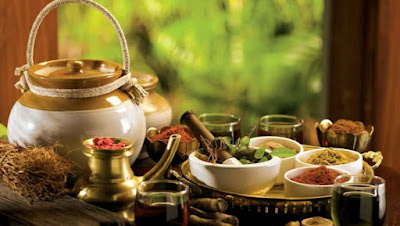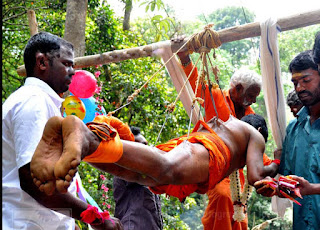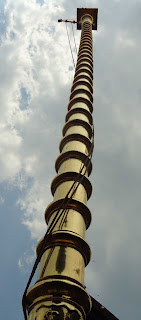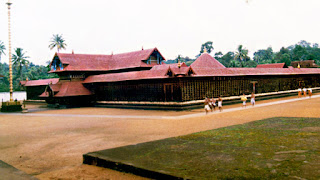Balarama, the elder brother of Sri Krishna is regarded as an
incarnation of Lord Vishnu. Out of the ten incarnations of Lord Vishnu, only
the Sri Krishna incarnation is the complete one, while the rests are partial
ones (Amsha Avatharas). Some others believe him to be the manifestation of
Serpentine Anantha (Anatha Naga) who is quite identified with Lord Vishnu. However,
there are a few temples dedicated to him and there are very few devotees
worship him. One such temple is there in the Kannur District of Kerala which is
located about eight kilometers from Thrichambaram Sri Krishna Temple.
Balarama is the first peasant king in our world. He was a
king who was very particular about the prosperity of his country and its
subjects. At a time, when Vrindavan hit with severe drought, he requested River
Kalindi to change her path and provide water to the farmers of Vrindavan, but
she did not listen to his words. Furious Balarama, dug the sides of the
river with his mighty plow and took the river water to the Vrindavan. Although
he has been depicted as a savior of peasants in the epics, it is quite
astonishing that there are very few devotees for him in a country that mainly
depends on agriculture for revenue.
Anyway, now let us talk about Mazhoor Sri Balarama Temple.
You might have read the legend behind Thrichambaram Sri Krishna Temple, which has
been published in this blog. We have mentioned there that Sage Narada presented
two idols, one of Sri Krishna and the other is of Balarama for that temple. That
idol of Balarama has been brought here and consecrated in this temple.
Puthukkudi Perumthatta Illam was one of the prominent
families in that area who had several rights on Thrichambaram Sri Krishna
Temple. Once, a person was there in that family who was an ardent devotee of
Lord Sri Krishna. He used to visit Thrichambaram Temple daily to worship god.
As time passed he became old and weak. He could not go such a long distance
by walk. The fact that he had to stop his temple visit made him sad and
depressed. He prayed to god for a solution.
One night in his dream, Lord Sri Krishna came and told him
that the next day morning he could see the calf with the name Dharmi near his
house. The place where she put cow dung should be dug and there he will get a
Salagramam (a holy stone which is believed to have divine powers). Further, Sri
Krishna insisted him to dig a pond at that place and keep the salagramam inside
it. He asked the devotee to consecrate an idol of his elder brother near the
pond and start worshipping.
The very next day, the man saw the calf Dharmi near his
house and followed the instructions of Lord Krishna. He took out the Salagrama
first and then dug a pond there and kept the holy rock inside it. Then he
brought the idol of Balarama from Thrichambaram Temple, which has been
presented by Sage Narada and consecrated near the pond after constructing a
temple.
In the beginning, we told you the story of Balarama, changing
the route of Kalindi. That is told in Maha Bhagavatham. An almost similar incident
happened at Mazhoor also. Once, Mazhoor experienced severe drought as
experienced by the people at Vrindavan. There was no rain and the crops have
been destroyed due to the lack of proper watering. The entire village suffered a
lot due to this. Then the head of the Puthukudi Perumthtta Illam family got touched
with the miseries of his fellow villagers. He went to the Balarama Temple and
shouted at the deity.
Can’t you see people suffering from drought? Why are you
holding the plow in your hands? That is a weapon for farming and not a
decorative piece. If you cannot help us, then what is the point in calling you
the Peasant King?
Once the shouting is over, the man got repented. He thought
that he did a wrong thing by calling the lord with such words. Then he consoled
himself that the lord can understand his agony and will forgive him. Yes, the
Lord Balarama not only forgave the devotee but blessed him too with a lot of
showers. The very same night Mazhoor experienced heavy rain.























